![]() In the beginning of this article series, we discussed the reality that there are three basic, fundamental conceptual skills to utilizing the handgun—or any firearm, for that matter—in a self-protection context. The first of these that we discussed was the one that most instructors and trainers are really pretty good at teaching: being able to hit what you are trying to shoot. While different courses will focus on different standards of accuracy and precision, most of them are reasonably capable of developing students’ abilities to meet whatever standard the course professes is “combat accurate.”
In the beginning of this article series, we discussed the reality that there are three basic, fundamental conceptual skills to utilizing the handgun—or any firearm, for that matter—in a self-protection context. The first of these that we discussed was the one that most instructors and trainers are really pretty good at teaching: being able to hit what you are trying to shoot. While different courses will focus on different standards of accuracy and precision, most of them are reasonably capable of developing students’ abilities to meet whatever standard the course professes is “combat accurate.”
The second skill set, getting the gun into the fight, is less proficiently covered by many instructors, for a host of reasons. Some instructors are uncomfortable teaching novices to draw and fire, under time constraints, or other stressors, from concealment, because of the increased risk of accident. Others may have never actually spent much—if any—time drawing from concealment themselves. Finally, most have little or no context for considering, let alone teaching, realistic, effective methods for accessing and presenting the gun, in the “Oops, I messed up,” context of the shooter already being behind the action, and in the process of getting his head stomped in. Regardless however, most courses will spend at least some time teaching or discussing the draw stroke mechanics and application.
Both of those skill sets are important, and critically so. I would argue however that, while those are adequately—if not perfectly—covered, in most courses of instruction, what is considerably less well-taught is what is inarguably the single most critical conceptual skill in the real world application of the firearm in the self-protection role: making good, sound decisions, under the stress of a life-or-death situation. This is given short shift, for a variety of reasons, ranging from a lack of understanding of how people’s brains work, to a lack of understanding or thought, about how to train an accelerated decision-making process under stress.
Most often, when we do see “decision-making” covered in shooting class course work, it is over simplified, or “dumbed down,” to the point of requiring students to make a simple binary decision: “shoot or don’t shoot.” This is often achieved by simply painting the silhouette of a weapon on the “shoot” target silhouettes, and a pair of spread hands, in a surrender gesture, on the “don’t shoot” target silhouettes. For a variety of reasons that we will discuss in this article, that is horribly inadequate, and more than negligent, in my experience.
Dude’s Pointing a Gun at Me, I’m Gonna Smoke Him!
I actually had this discussion with a student recently. I pointed out that in the real world, the person downrange with a weapon, may not be the bad guy. He may be another armed citizen trying to help, he may be a police officer, or he may be the bad guy, among a host of other possibilities. Coincident to that, the dude without a gun may or may not warrant shooting. The small, elderly gentleman who is simply fleeing the sound of gunfire may not require shooting, but the Super-Sized, Drunk Redneck, unarmed, but intent on caving your skull in with his fists and work boots? That dude probably does warrant shooting, for most armed citizens, regardless of the fact he appears to be unarmed.
The student’s response was, “Well, I suppose it depends on where he is pointing the gun then. Dude’s pointing a gun at me, and I’m going to smoke him!” Fair enough, but again, once we move past the tough talk, we see a number of erroneous conclusions in this premeditated decision: if we are drawing our concealed carry piece, presumably, it is because there is a violent situation unfolding, and we are trying to solve it. There is a fair to middling chance then, that any other responsible, armed citizens in the nearby vicinity, including uniformed or plain clothed police officers, may very well be doing the exact same thing. You see a dude with a gun, in a violent environment, even before you make the shoot/no-shoot decision, you are probably pointing a gun at him. So, he is pointing his gun back at you…because some dude is pointing a gun at him! Now, instead of being able to process the available data in the battle space, recognize that perhaps this dude is actually on the same side, and teaming up to deal with the actual bad guy, the two of you—or more, for that matter—are stuck in a Polish Firing Squad scenario. So, being able to process the incoming data, and determine that, “nothing about this dude, other than the fact that he is—like me—armed, indicates that he is a/the bad guy. Perhaps I should hold off on shooting him for a moment,” becomes a pretty critical skill.
The second issue we have is one that seems, at least to me, to be occurring with increasing frequency. This is an armed citizen engaging what he “thinks” is a bad guy, such as a burglar, or home invader, only to discover, too late, that it was a child or spouse. Whether out of stupidity (my bet), hyper-aggressiveness and a longing to “get a bad guy,” or just poor judgment, this is a very, very bad outcome, and can be blamed, in the totality, on a lack of sound decision-making prior to and in the midst of, the gunfight. We need to develop the ability to make good decisions—appropriately correct decisions—not only before the first shot rings out, but also in the midst of the firing solution.
That last bit is equally important. Whether it is a matter of cracking the first round at the bad guy, and being confident in your ability to make the shot, then determining that, “Hey, I need to shoot him again, he’s not done yet,” or it is a matter of cracking the first round at the bad guy, and realizing you missed, and he was standing between you and a playground full of children, so “maybe I should NOT be shooting, in the first place,” being able to recognize when to continue shooting, and when to stop shooting, is pretty important. The one thing I can tell you, with absolute certainty? If you shoot some grade school kid on a playground, because of negligence, and trying to shoot outside your skill zone, you absolutely, positively CANNOT fix that by continuing to shoot up all of his playmates.
Pre-Fight Decisions
I firmly believe that, the moment you strap on a gun, you need to make some very real, very specific decisions about a couple of things. A) What am I willing to draw my gun over? B) What am I willing to shoot someone over? C) Which of those am I willing to spend the rest of my natural life in prison over? Adding that last question, a lot of the times, plays a pretty significant role in drastically changing the answers to A and B, but in the real world, where most of us live, it is a pretty important consideration to make. It’s cool to say, “I’ll smoke anybody that points a gun at me,” until you realize, some kid pointing a gun at you, from far enough away that he probably doesn’t actually pose a threat, and you shooting him, is just as likely to land you with a new roommate/lover as it is to land you with the accolades of a public hero.
“We should shoot looters! If I saw someone looting, I’d shoot them!” Great, so you are willing to kill someone, and potentially spend the rest of your life as someone’s prison sex toy, over the physical, material property of someone you probably don’t even know? Your call, dude.
Obviously, I cannot tell you what the answers are to A, B, and C, for you. We probably have different values, at least to some degree, and we certainly have different circumstances. However, I can offer my personal answers to those, and those answers may offer some modicum of guidance for developing your own answers.
To preface this, I carry a gun every day, every where. I take it off when I go into the Post Office, and that’s it. It goes on when I get out of bed in the morning and put my jeans on. It comes off when I pull my jeans off at the end of the day, to crawl into bed.
In answer to question A, I am willing to draw my gun when I genuinely feel that my life, or the life of innocent bystanders around me, may be in some danger. This could—and has—ranged from being in a grocery store and hearing a gunshot from near the front of the store (it was, in fact. Some idiot was pocket carrying a Glock 27. He reached into his pocket for his keys, and managed to smoke a round into the floor of the supermarket), to a group of apparently criminal actors entering the place I am, aggressively, with improvised weapons already in hand (six young adults, dressed like morons, carrying a variety of sports implements, ranging from baseball bats to a hockey stick. They were, in fact, members of a gang, and they were in fact, known violent actors. They were not there, that day, with the intent of being violent). In the first example, I drew my gun and hunkered down, next to the shelves, and started moving forward, until I could see what was going on. When I did see what was happening, I reholstered and went forward to offer help. In the second example, I didn’t completely draw the gun. I placed my hand on it, under my cover garment, and monitored the situation, until they left.
My response to question B is, “I am willing to shoot someone who presents what I believe is posing a legitimate threat of death or grave bodily harm to myself, my wife, my children, or any of the people I consider family.” This answer is significant for two reasons. One, it doesn’t require that they be an immediate threat. If I genuinely believe that someone is going to kill or harm my family, I am willing to face option C, in the interest of protecting my folks, even if it means I am using preemptive violence to do so. More immediately however, my willingness to resort to violence, in the protection of family does not automatically mean, going to guns. I have the size, athleticism, and training background to solve many of those problems otherwise. Someone with less size, athleticism, or an inadequate training background may need to resort to guns sooner. That is a contextual decision, but it is one that needs to be determined long before the time comes that you need to draw your gun.
Finally, we address question C. As mentioned above, I am willing to go to prison to protect the people I love. I am not willing to go to prison to protect my truck. I am not willing to go to prison to protect material property. So, if I feel I need to use violence to protect those things? I had better be able to determine that the chances of getting caught are next to non-existent. I am most certainly not willing to go to prison to protect someone else’s property, and I’m not even willing to go to prison to protect someone outside of my innermost circle. Again, none of that precludes my willingness to use violence in those pursuits, but it does mean I am going to consider the risks before I wade in to the mess. Generally though, it means, I am going to mind my own business.
Again, to belabor the point…my decisions are largely, in a practical context, irrelevant to you. They do illustrate however, some of the potential issues involved in the first phase of “making good, correct decisions” about a life-or-death situation. What they decidedly are not are as simple as, “I’ll shoot anybody that points a gun at me!” They certainly need to be made, long before the fight occurs.
In-Fight Decisions
When the decision has been made, whether by you, or for you, to engage an armed adversary, the crux of what most people consider, when discussing tactical decision-making, begins to occur. This is the arena wherein we consider split-second decisions regarding shoot/no-shoot, etc. It is the arena of tactical decision-making where it is possible to develop training drills that accelerate our decision-making, and actually make us more competent at making correct decisions, faster, under various types of physical, mental, and emotional stress. Frustratingly, because of institutional inertia, lack of understanding, and often, I fear, mere laziness, it is the arena of tactical decision-making that is most often taught inadequately and inappropriately in shooting schools and courses.
Simple binary decision-making is not adequate during the fight. Whether we are an armed citizen, defending the home, a police officer involved in a traffic stop or warrant operation, or a military service member, executing combat patrols in an inhabited area, there are too many potential variables, as well as multiple streams of decision-making that have to occur, sometimes simultaneously, to reduce this down to the binary.
At all levels, tactical decision-making requires taking in all of the available data in the battlespace, sorting its relevance, and then making decisions, based on the available, RELEVANT data, and your previous experience and training. At the simplest possible level, making the initial “shoot/no shoot” decision means sorting through a lot of information as quickly as possible: who is in the battlespace? Who among those could be a/the threat? Are they a threat? How do I determine if they are a/the threat? Are they an immediate threat? Which immediate threat is the most immediate threat? Do I have the ability to counter that threat with violence? If not, can I alter the battlespace, in order to give myself the ability to do so? Do I have the ability to flee the battlespace? If I do not have the ability to engage, or to flee, is there somewhere safe I can move to, until the situation changes, either way?
Suddenly, the overly simplistic explanations of Colonel Boyd’s OODA cycle, and the binary “decision-making” drills used in too many classes start to look really, really dumb, don’t they?
If I do make the decision that I have identified the threats, including the most lethal threat, and that I have the ability to counter that threat with violence, I have to move on to MORE tactical decision-making. What is the safest, most efficient means at my disposal to engage? Should I shoot them? Should I close with them and engage with unarmed combatives or an impact weapon? Since this is PreparedGunOwners.com, we will assume, for a moment, that I have determined that shooting them is going to be the most efficient. Now, I get to decide, do I have the ability to actually make the shots I need to make? What is beyond the target, and to either side of the target? What/who is between me and the target? Is the target wearing an explosive device, mandating a head shot? Can I make THAT shot? Is the target stationary or moving? Can I wait for him to stop moving, or do I HAVE to take a shot on a moving target?
If I decide I can make the shot, and I take it, now, I move into ANOTHER decision-making cycle: at what point do I have an adequate sight picture to engage the target accurately? When I break the shot, I have to reacquire a sight picture and follow-up, determining if my first shot did the job, or if I need to continue shooting the subject, in order to elicit the desired response, whatever that is. Of course, that brings us to, “what, exactly, is the desired response we are trying to elicit?” Am I trying to kill him? Am I trying to simply ‘stop’ the threat? What defines ‘stopping?’ That is contextual, and can legitimately, only be made in the moment. It’s cool and macho to talk about “shooting them to the ground,” but what if, in the midst of shooting him to the ground, after putting one or two or three rounds into the “most immediate threat,” a round cracks past my head from elsewhere? Now, I have to switch gears, and return to assessing the battlespace, and determine where this newly “most immediate threat is,” and forget shooting the first dude to the ground. Now, I’ve got a new most immediate threat that needs to be dealt with first.
Worse, what if, instead of cracking past my head, that round slams into my body somewhere? Now, I’m going to be forced to not only re-assess the battlespace, but to first assess my personal situation, all over again. “I’ve been shot! Can I continue to fight? Do I still have the ability to continue effectively fighting?” (Short answer? If you are assessing, the answer is “Yes! Move out and keep in the fight.”)
How The Hell Can We Train That?
The obvious question is, “how can we train for that?” The obvious answer, in return is, “we cannot.” Every situation is going to be too contextually specific to formulate one drill that will answer the specific cognitive loading demands of every potential self-protection scenario we might potentially find ourselves in.
What we can do however, is actually even more useful. That is, we can utilize drills that focus not on specific cognitive tasks, but that force us to accelerate our cognitive task loading, in an abstract manner, so that the acceleration may be useful in multiple, vastly different specific situations. That is why, ultimately, this methodology may be “even more useful.” The ability to process all of the available data in our immediate environment, sort its relevance, and then process the relevant, available data into useful information is functionally useful across the spectrum of our lives. My personal experience—verified by multiple former students corresponding with me about it after taking my classes—has been that this particular training methodology applies to driving, work, playing sports, and a host of other activities that require rapid, contextually correct decision-making.
The Drills
I use two basic drills in training classes to demonstrate this training methodology, in a progressive manner, that students can—and have—taken back and performed on their own, home ranges, with reportedly great success. The first is one I have borrowed from Frank Proctor, former SF soldier, and owner of Way of The Gun, in Eastaboga, AL. It is a drill that Frank calls “Third Grade Math.”
Third Grade Math
This is, at its simplest, a number of targets, all marked with a number. On the Start signal, the shooter is shown a card with a number written on it. The shooter then looks for TWO targets, the sum of their numbers which equals the target number. Then, the shooter engages those two targets with the number of rounds indicated by the number on the target. For example, if the target number is “seven,” the shooter could shoot any number of two target combinations: one and six, two and five, three and four, or the same number combinations in reverse. As Frank points out in the video linked, this drill is all about receiving and processing the available, relevant data, and then applying it, as quickly as possible, to the shooting solution.
One variable that I like to toss in occasionally is to assign a target number that cannot be addressed with the available target combinations. So, I might show a card with the number three on it, but there is no target with the numeral “one” on it. Now, there’s no way for the shooter to complete the drill, right? Most times, the shooter, at least the first few times, will be so amped up, they’ll see “three,” then they’ll see the number “two” target, and dump a controlled pair into it, then start looking for the number “one” target, only to realize there isn’t one, so they cannot complete the drill. Problem is, they’ve already failed the drill. The only “correct” solution would have been to not start shooting, in the first place. They failed to accurately assess all of the available data, and they shot “someone” they shouldn’t have shot.
This is a solid, intermediate level shooting drill that should be incorporated into any serious defensive shooter’s training program, to integrate the most important conceptual skill involved in self-protection shooting: making good, correct decisions, under a life-or-death situation. It forces you to assess the battlespace faster, while still being accurate, and brings in the shooting, or the no-shooting.
(There are other modifications that can be made to this drill, that will be covered in a later article.)
The PRA 1-5 Drill
The PRA 1-5 Drill is a product of my own development, based on a number of sources, most notably Kyle Lamb’s “1-5 Drill,” and a drill I found in Pat McNamara’s book TAPS: Tactical Applications of Practical Shooting, the name of which I can never remember.
At the basic level, the PRA 1-5 (PRA= Perception, Recognition, Acquisition), requires six targets, set up in a random sequence, at varying depths and intervals. The targets are numbered 1-6. The shot timer is set for a delay start. Shooter begins facing uprange, pistol holstered and concealed. When the coach/trainer/partner starts the delay, he shows the shooter a card with three numbers on it, all between 1 and 6. (i.e. 1/3/5 or 6/2/4). When the timer beeps, the shooter turns to face downrange, draws, and engages the targets in the correct sequence, firing one round to the first target, two the second, three to the third, then comes back to the second target for four rounds, and the first target for five rounds, as in Kyle Lamb’s 1-5 Drill, only now, the targets are spread out and in random order, with “no shoot” targets (any targets not in the sequence are, by default, “no shoots”).
This drill, like Third Grade Math, requires rapid assessment, and good decision-making, but approaches the problem from a different angle, requiring the shooter to think about concrete considerations, in an abstract manner. In other words, the shooter has to determine what the first target is, then he has to engage it with an appropriate number of rounds, then he has to move on to the second target that meets his “shoot” criteria (in this case, having the correct number marked on it), and engage it with the appropriate number of rounds, etc. In the real world, this equates to making a conscious decision about “I should shoot this person,” or “I should not shoot this person,” and then assessing each shot, “was that enough?” “Did that do the job, or do I need to shoot him again?” before moving on to the next available target.
I’ve found that most students find this drill more challenging than Third-Grade Math, because of the increased cognitive load. For this reason, I use Frank’s Drill to set up and introduce cognitive loading, before bringing this drill onto the range.
Conclusion
Too often, we tend to oversimplify things. From politics and religion to relationships and more, all the way down to shooting, we want simple, easily digestible soundbites that require little or no effort to utilize. “The most important part of defensive shooting is being able to hit what you are shooting at!”
The reality however, is that it’s not that simple. The most important part of defensive shooting is being able to determine whether or not you have the ability to make the shot that needs to be made, or if you should avoid taking the shot. The simple soundbite is easier. The real-world requires more effort.
If your shooting focuses on simple, pure marksmanship, or if it focuses on run-and-gun, using “spray-and-pray” shoot-em-all drills, that is fine for recreational purposes, but you are doing yourself, your family, and your community, a disservice, if you actually carry your gun. The Prepared Gun Owner, interested in being able to fulfill his civic obligations to his or her community, has a moral obligation to incorporate realistic, effective decision-making training into his practice. These are two drills that can help with that.





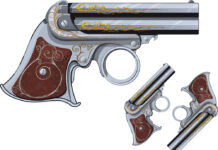



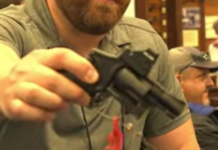
![What Level Holster Should You Be Using? [Video]](/wp-content/uploads/2024/04/Depositphotos_44548439_S-218x150.jpg)
![Case Study: Defensive Gun Use [Video] NSFW](/wp-content/uploads/2025/07/Depositphotos_282075792_S-218x150.jpg)


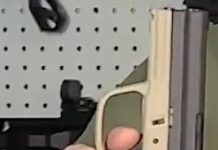
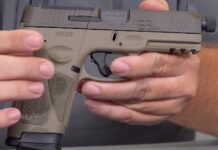

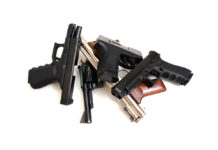
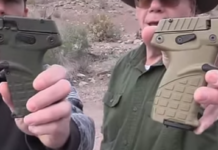


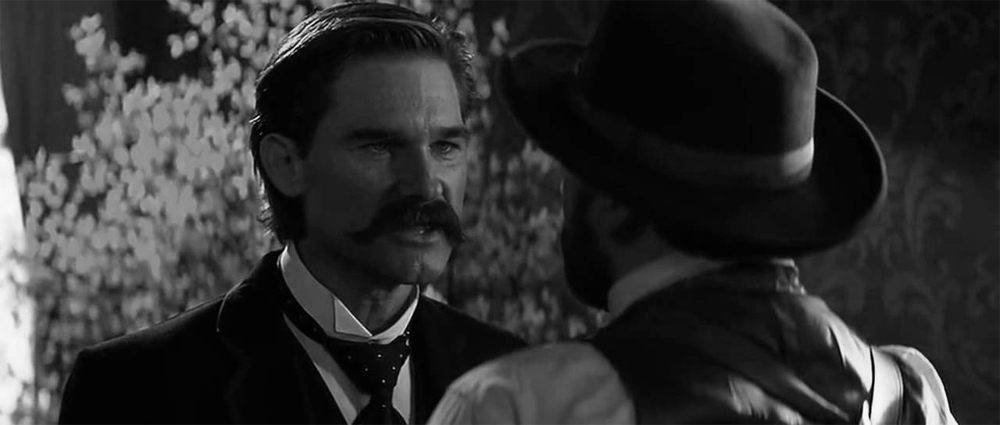



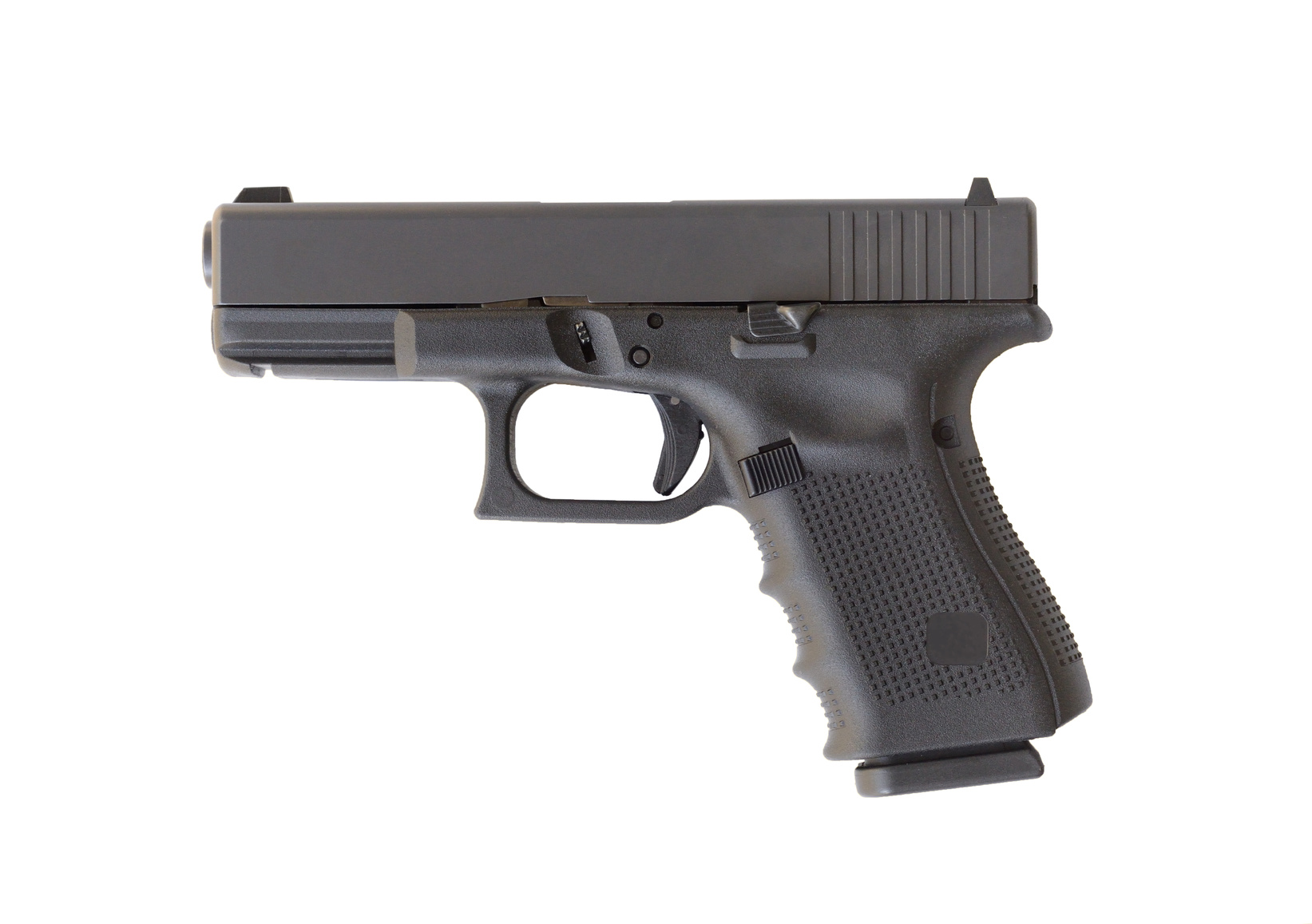






![Optic Ready vs Milled slides? [Video]](/wp-content/uploads/2024/02/image-3-100x70.png)
![[Checklist] What Gear You Need To Take Pistol, Rifle & Shotgun Training Courses [Video]](/wp-content/uploads/2023/07/Depositphotos_275087632_L-100x70.jpg)
![What is in Carter’s 2023 EDC? [Video]](/wp-content/uploads/2023/07/Depositphotos_146856137_L-100x70.jpg)



Excellent training on the cognitive sector! Moraly I would never want to injure a noncombative entity,ie children grandma ect. So i really liked the traing on desicion making. Great job gentlemen! Thanx, Victor j.
[…] is a surprisingly good article on the need to force information processing into your defensive training. His exercises at the end could be better (particularly the second one), and I’ll disagree with a […]
Comments are closed.